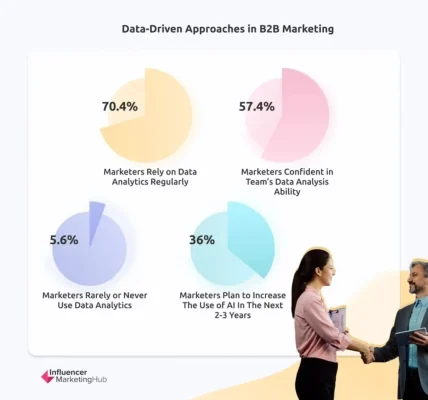Let’s be honest. The old way of doing things—the “here’s an ebook, please fill out this 15-field form” approach—isn’t just tired. It’s borderline rude. You’re asking for a lot while giving very little in the moment. It’s like asking for a handshake before you’ve even smiled.
That’s where interactive content swings in to save the day. Think of it as a conversation instead of a monologue. It’s content that requires active participation, that responds to the user’s input. And honestly, it’s a game-changer for capturing leads that are not just names in a database, but genuinely engaged prospects.
Why Interactive Content? The Unfair Advantage
Static content (blogs, whitepapers, simple PDFs) is like a lecture. Interactive content is a workshop. The engagement levels are just… different. It’s the difference between someone skimming an article and someone spending five minutes inside a customized calculator, seeing real value with their own data.
This isn’t just a hunch. The data backs it up. Interactive content consistently generates two times more conversions than its passive counterparts. Why? Because it provides immediate, personalized value. It’s a value-for-information exchange that feels fair, even exciting.
A Toolkit of Interactive Formats for Lead Generation
Okay, so what does this actually look like in the wild? Here’s a breakdown of the most potent interactive content formats for building your email list and sales pipeline.
1. The Mighty Quiz and Personality Assessment
Everyone loves a bit of self-discovery. Quizzes and assessments are incredibly sticky. They tap into our innate curiosity about ourselves. “What kind of marketer are you?” or “Is your website SEO-ready?”
The lead gen magic happens at the results page. To see their outcome, users willingly provide their email address. You’re not just getting a contact; you’re getting a data point about their preferences, challenges, or style. That’s segmentation gold right from the first touch.
2. Calculators and Configurators
If you can quantify your value, this is your format. A calculator makes abstract benefits concrete. Think: “ROI Calculator,” “Savings Estimator,” or “Project Cost Configurator.”
A user inputs their specific numbers—their ad spend, their monthly energy usage, their team size. The tool then spits out a personalized result. This is incredibly high-value content. They get a tangible takeaway, and you get a lead who has literally shown you their pain point or goal through their inputs.
3. Interactive Infographics and Maps
Static infographics are a dime a dozen. But an interactive one? That stops the scroll. Users can click on different sections to reveal more data, hover over points to see stats, or filter a map to see regional information.
The lead generation angle here is often a “Download Full Report” or “Get the High-Resolution Version” call-to-action that appears after they’ve interacted with the content. You’ve already given them a taste of the insight; now they’re primed for the full meal.
4. Interactive Video and Branching Scenarios
Video is powerful. Interactive video is immersive. Imagine a product demo where the viewer chooses which feature to explore next. Or a “choose your own adventure” style training video.
To unlock the next chapter or access the full branching scenario, users enter their email. This works because you’ve created a cliffhanger. They’re invested in the story and want to see the outcome of their choices.
5. Assessments and Graders
Similar to quizzes but with a more serious, diagnostic bent. These are tools that “grade” or “score” something for the user. “Website Grader,” “Social Media Audit,” “Content Marketing Maturity Assessment.”
The perceived authority is high. People want to know how they stack up. The detailed report, delivered via email, is the carrot. And the data you collect gives your sales team a perfect conversation starter: “I saw your site scored a 54/100 on SEO. Here are three quick ways to improve…”
Best Practices for Interactive Content that Converts
Creating it is one thing. Making it work is another. Here’s the deal—a few key principles separate the winners from the duds.
Provide Genuine Value, Don’t Just Gatekeep: The interaction itself should be valuable. If the calculator is simplistic or the quiz is irrelevant, no one will bother. The value is the experience, not just the final result.
Keep the Friction Right: Don’t ask for a birthdate and company revenue on the first interaction. Usually, an email is enough. You can gather more data later. The goal is to make the exchange feel effortless.
Promote it Like Crazy: Interactive content is your superstar. Feature it on your homepage. Run social media ads directly to it. You know, give it the red-carpet treatment. It’s not just another blog post.
Follow Up with Context: Your follow-up email should directly reference their interaction. “Here’s the ROI calculation you requested,” or “As a ‘Visionary Leader’ based on your assessment, you might find this guide helpful.” This personalization makes all the difference.
The Future is a Two-Way Street
In a digital world saturated with noise, attention is the ultimate currency. Interactive content doesn’t just ask for attention; it earns it. It transforms your marketing from a megaphone into a dialogue.
You’re not just building a list. You’re starting relationships with people who have already raised their hands, who have already spent time with your brand, and who have shown you exactly what they care about. That’s a foundation you can actually build on.










